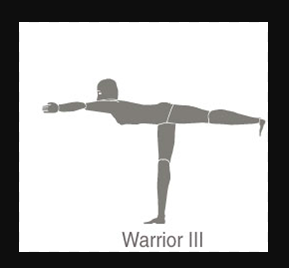Memorial Day, a day Americans remember and honor those warriors who have given their lives defending and protecting our freedoms that we hold so dear. We must also honor today’s warriors, who have served our country (our veterans), or continue to risk their lives for our country.
A warrior embodies the following characteristics – Courage, Faith and Service. As we honor those brave men and women who have sacrificed their lives in the name of service to this country, we should ask ourselves, “How can we be warriors in our own lives?”
Yoga gives us many opportunities. In Yoga, we often practice various Warrior Poses. But where did they come from? It may seem odd that the peaceful practice of yoga includes postures known as “Warrior”. As with everything in Yoga, there is a lot of hidden meaning behind it. The meaning is rooted in Hindu mythology. It originated from a story of love, hate, rage, violence, sadness, compassion and forgiveness which begins with the marriage between Lord Shiva, Supreme Ruler of the Universe and his bride Sati.
According to ancient texts, Sati’s father, the powerful King Daksha, did not approve of this marriage. One day, Daksha held a large event known as a Yagna but did not invite Sati and her husband Shiva. Sati found out and decided to go alone to the Yagna. When she arrived, Sati entered into an argument with her father. Unable to withstand his insults, she spoke a vow to her father,
“Since it was you who gave me this body, I no longer wish to be associated with it.”
The story goes that Sati sat down on the floor, went into a meditative trance, and began to increase her inner fire (Agni) until such point that she burst into flames and dies.
When Shiva heard of Sati’s death, he was devastated. He yanked out one of his dreadlocks and beat it into the ground, where upon rose a powerful Warrior. Shiva named this warrior Virabhadra. Vira (hero) + Bhadra (friend) and ordered him to go to the Yagna and destroy Daksha and all his guests.
Here is where the poses come in.
- Virabhadrasana I (Warrior I): Virabhadra entered the Yagna by thrusting his way up from the deep underground with his sword held over his head in both hands.
- Virabhadrasana II (Warrior II): Virabhadra sights his opponent, Daksha and steadies himself in preparation to strike.
- Virabhadrasana III (Warrior III): Virbhadra lifts his sword (in his hand behind him) into the air, swings forward, and severs the head of King Daksha.
Shiva then arrives at the Yagna and sees the destruction. Shiva absorbs Virabhadra back into his own form. Filled with sorrow and compassion, Shiva finds Daksha’s body and gives it the head of a goat, which brings him back to life. In the end Sati is also reborn.
MORAL OF THE STORY:
When Virabhadra kills Daksha, one could say the warrior represents an aspect of the higher self that manifests to slay the human ego, represented by Daksha. Then, when Shiva brings Daksha back to life, he reminds us that inner work isn’t as simple as destroying the parts of ourselves we don’t like. Instead, if we extend compassion toward the harmful sides of ourselves, we can invite them to soften and relinquish control. Through our warriorship, we can accept ourselves, even the aspects we wish to discard.
Reverse Warrior teaches us to stand strong on our mats, just as we strive to stand strong in the highest, most benevolent truth of who we are. And as we gaze upward, as if toward our potential, we also reach back for support; we are thus encouraged to call upon the tools we need to navigate the inner realms of ego—whether those tools take the form of meditation, self-inquiry, a regular asana practice, or the words of a master teacher.
So, what makes a great warrior?
Courage, Faith and Service.
It is easy to build impervious walls and shield ourselves from “harm”. It takes Courage to show up in your life, to feel and care for ourselves and those around us. On our mats, we find courage, not only in the challenging postures, but also, and perhaps more so, in the stillness of Shavasana.
Faith is complete trust or belief in someone or something, sometimes trusting something not easily seen or understood. Our warriors serve with absolute faith that what they’re doing is right and in the best interest of our country. Connecting with your warrior requires you to believe in yourself and your unique gifts. When we develop our gifts, we are serving others. It takes faith (and courage) to show up on our mats, to consciously breath,to stand on one foot, to go upside down and to be still in Shavasana.
“Service to others is the rent you pay for your room here on earth”. – Muhammad Ali –
Being a warrior means taking responsibility for your actions as they relate to others and the world around you. We all have a responsibility to live this life to the best of our ability. This means taking care of ourselves, our family, our neighbors, our Earth, our Universe. The principles of Yoga teach us to live a life of loving kindness, on and off the mat.
To all the Warriors,
Namaste
Millie





